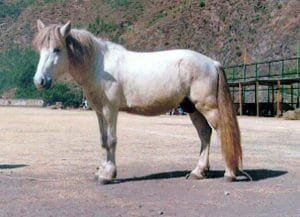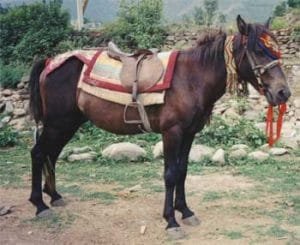Majestic Spiti Horse: A Glimpse into an Ancient Tradition
The Spiti horse is more than just a breed; it is a symbol of the resilience and rich cultural heritage of the Spiti Valley. Its adaptability to harsh environments, coupled with its central role in the lives of the local people, makes it a fascinating subject of study and admiration. As we look towards the future, it is crucial to support conservation efforts and recognize the importance of preserving not only the Spiti horse but also the traditions and lifestyles that it represents. So, the next time you hear about the Spiti horse, remember that you’re learning about a living piece of history, a testament to the enduring spirit of the high Himalayas.
The Spiti Horse: An Overview
The Spiti horse is a small, robust breed that has adapted remarkably well to the harsh conditions of the Spiti Valley. Known for its resilience and endurance, this horse is perfectly suited to the rugged terrain and high altitudes of the region. With a height that typically ranges between 12 to 14 hands (a hand is 4 inches, measured at the withers), these horses are compact yet incredibly strong.
| Feature | Details |
|---|---|
| Origin | Spiti Valley, Himachal Pradesh, India |
| Size | Small to medium; typically stands around 13-14 hands high |
| Build | Compact and sturdy with a strong, robust frame |
| Coat Colors | Common colors include bay, chestnut, black, and gray |
| Temperament | Hardy, resilient, and generally calm and intelligent |
| Endurance | Excellent; well-suited to the rugged and high-altitude terrain |
| Uses | Primarily used for transportation, local farming, and cultural activities |
| Adaptations | Adapted to cold and high-altitude environments with thick coats and a high metabolism |
| Diet | Grazes on hardy grasses and can survive on minimal forage |
| Reproduction | Generally produces strong and healthy offspring |


Physical Characteristics
Spiti horses are well-adapted to the extreme weather conditions of their home. Their thick, dense coats provide insulation against the cold, while their sturdy hooves are perfect for navigating rocky and uneven paths. They come in a variety of colors, including brown, black, and gray, and their build is typically muscular and compact, reflecting their hardiness and strength.
Role in Local Life
For the people of Spiti Valley, these horses are indispensable. Historically, they have been used for transportation, carrying supplies across treacherous mountain paths. In the past, they were also used as pack animals to transport goods between remote villages and trading posts. Even today, they continue to play a crucial role in daily life, especially in areas that are inaccessible by motor vehicles.
The Spiti horse also features prominently in local festivals and traditional ceremonies. During these events, they are often dressed in colorful decorations and are the center of attention, showcasing their beauty and strength. The annual Spiti Horse Festival, for example, is a celebration of the breed and its significance to the local community. It includes events such as races, demonstrations of skills, and cultural performances, drawing both locals and tourists alike.
Conservation and Breeding
Despite their importance, Spiti horses face challenges due to changing lifestyles and modernization. Traditional methods of transportation are gradually being replaced by vehicles, which has led to a decrease in the number of these horses. Conservation efforts are underway to preserve the breed and ensure that it continues to thrive. Local organizations and breeders are working to maintain the purity of the Spiti horse through selective breeding and education about the breed’s significance.
In the rugged, high-altitude region of Spiti Valley, nestled in the northern Indian state of Himachal Pradesh, one finds not only breathtaking landscapes but also a unique and fascinating breed of horse known as the Spiti horse. This hardy creature is not just a means of transportation but an integral part of the local culture and heritage
More Popular Search




